MI-Suite (Materials Informatics Suite)
Property estimation function using machine learning supporting various methods related to Materials Informatics
MI-Suite consists of functions necessary for Materials Informatics (MI), such as a maximum common substructure search function, a descriptor calculation function, and an external database access tool, centered on the estimation of QSPR (Quantitative Structure-Property Relationship) using machine learning. J-OCTA also provides tools (e.g. modeling API, scenario functions, etc.) to support creating databases of physical quantities and properties by creating a large number of inputs and performing calculations. This allows for the possibility of using simulation results instead of experimental results to compensate for the lack of data needed for machine learning.
The selection of data to be used for machine learning and the setting of training conditions can be done from a dialog box, and there is no need for users to do any programming, so even novice users can start working on it immediately. In addition, several pre-trained models are included, and these models can be used for forecasting.
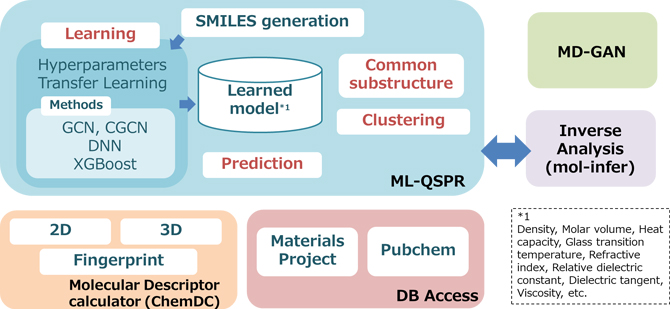 Overview of J-OCTA's machine learning capabilities
Overview of J-OCTA's machine learning capabilities
Functions
-
- 1. Data Browser
- 2. SMILES acquisition function
- 3. QSPR/QSAR function with deep learning (DeepQSPR)
- 1. Learning function
- 2. Predicting function
- 4. QSPR functionality based on traditional machine learning (ML-QSPR)
- 1. Learning function
- 2. Predicting function
- 5. Maximum common substructure search (MaCS Extractor)
- 6. Descriptor calculation function (ChemDC)
- 7. Database access tools (DB-Explorer)
- 8. Inverse analysis (mol-infer)
Available Learned Models
Density, molar volumes, heat capacity at constant volume, glass transition temperature, refractive index, dielectric constant, dielectric dissipation factor, characteristic ratios, viscosity, liposolubility, etc.
Materials & Process Informatics - Machine Learning for Materials Design in J-OCTA
Case study
-
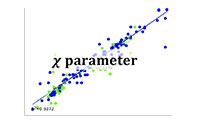
- Estimation of the χ parameter by machine learning
- Creating features from descriptors of two molecules and learning the relationship with the interaction parameter χ [Analysis Example] Estimation of the χ parameter by machine learning
-
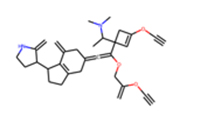
- Inverse analysis of QSPR using mol-infer
- Prediction of molecular structure from physical properties
[Analysis Example] Inverse analysis of QSPR using mol-infer
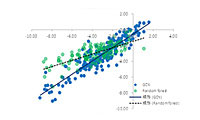
- Machine Learning QSPR and Materials Informatics
- Quantitative structure-property relationship using Deep Learning
[Analysis Example] Machine Learning QSPR and Materials Informatics
-
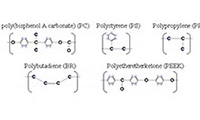
- Estimation of Property Values Using QSPR
- By using Quantitative Structure-Property Relationships (QPSR), we can estimate the physical property values of the polymer
[Analysis Example] Estimation of Property Values Using QSPR


